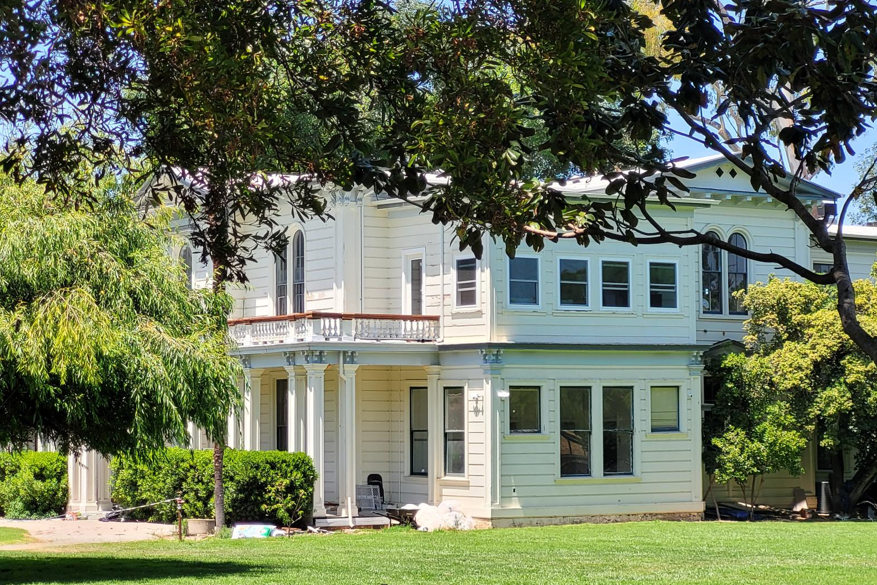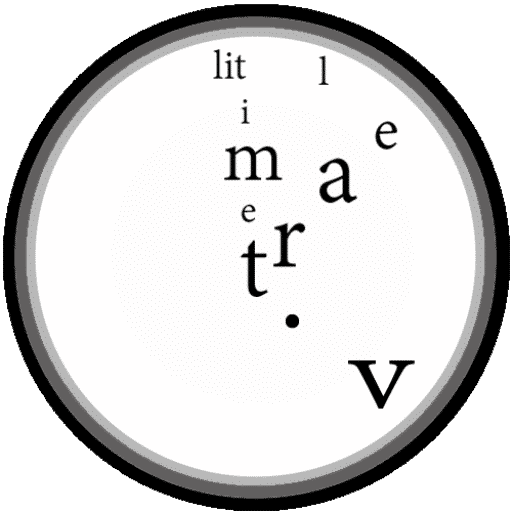
Mansion Grove Apartments
I traveled to Santa Clara, CA for the first time recently. And while down there, I visited an apartment complex called Mansion Grove. It’s located near the VTA Headquarters, Samsung, Cisco and other big companies.

The gated community features fountains, pools, a community garden, playground, tennis and basketball courts, and a fitness center. It even has a quaint cottage that residents can borrow for their families and friends. (With a fee, of course!)




I was walking around this peaceful and rather large apartment complex when I spotted the following:

Even at a quick glance, these buildings didn’t seem like they belonged there. Though they sit right inside the gated community, something about them had too much of that historical charm. But the most I imagined was that they were old facility buildings from a previous apartment company. Never did I imagine that they were buildings of the richest man in California back in the 19th century!!!

James Lick: The Man

(August 25, 1796 – October 1, 1876). Ca. 1870.
From the Library Company of Philadelphia.
When I finally got down to researching about the mysterious buildings, I was surprised to find that they were built and owned by a man named James Lick. According to Wikipedia, he was an “American real estate investor, carpenter, piano builder, land baron, and patron of the sciences.”
He was born in 1796 in Fredericksburg (née Stumpstown) in Pennsylvania to Pennsylvanian Dutch parents. His grandfather was a German immigrant who served in the Revolutionary War and his father was a carpenter. After learning the family trade and how to make pianos in Baltimore, Maryland, he built his own shop in New York City. In 1821 at the age of 25, he moved to Argentina, where his piano-making business was successful.

From the Matthews Public Library.
His Early Years
As I researched on, it was astounding to see all the drama he faced so early on in his life! Not only did he fall in love with a woman named Barbara Snavely, have his only child with her and never marry, but he also was taken as a prisoner of war at one point. He was coming back to Buenos Aires from his trip to Europe when the Portuguese captured the ship he was on. He had to escape on foot!
After the dramatic escape, he moved from Argentina to Chile due to the political instability at the time and then from Chile to Peru. He then decided to settle in California. In 1848, just a few days before the historic discovery of gold, James Lick arrived in San Francisco.

What’s also fascinating is that James Lick’s friend and neighbor back from his time in Peru was Domingo Ghirardelli! And apparently, Lick told Ghirardelli to move to San Francisco. Ghirardelli made his name and fortune selling chocolate while Lick made his buying real estate.

c. 1899. From the National Portrait Gallery.
Feats of the Richest Man in California

Published by the S.F. News Company. From the California History Society.
James Lick was at one point the richest man in California, owning large areas of Santa Clara County and San Francisco, land around Lake Tahoe, a large ranch in Los Angeles County, and all of Santa Catalina Island!
He built a grand hotel called Lick House, which sadly burned down in the fire following the 1906 San Francisco earthquake. Aside from the ostentatious hotel that was destroyed by the fire, Lick had also…
- donated to the University of California for the construction of the Lick Observatory,
- built free public baths called the James Lick Baths,
- founded the California School of Mechanic Arts,
- erected bronze statues before the San Francisco City Hall,
- built a memorial to Francis Scott Key (author of the national anthem, “The Star-Spangled Banner”) in the Golden Gate Park,
- and contributed to the Conservatory of Flowers. (Lick had intended the Conservatory of Flowers for San Jose but it ended up being purchased by San Franciscans and placed in the Golden Gate Park.)

From the Western Neighborhoods Project.
The Lick Observatory

The Lick Observatory was “the largest philanthropic gift in the history of science.” It began its operations in 1888 (Regents of the University of California). It was “the first permanently staffed mountain-top observatory” and “the world’s largest refracting telescope” at the time (University of California). There were groundbreaking discoveries and innovations made at the Lick Observatory, including…
- “Albert Michelson’s use of interferometry to measure the size of Jupiter’s moons,”
- Edward Emerson Barnard’s discovery of Jupiter’s fifth moon,
- creation of a “photographic atlas of the moon,”
- James Keeler’s study of the spectra of stars,
- the discovery of “unimaginably large numbers of galaxies,”
- Robert Trumpler’s “confirmation of the general theory of relativity,”
- “studies of star clusters,”
- and the discovery “that dark matter absorbs light in space.”
The Lick Observatory sits on Mount Hamilton, east of San Jose. Surprisingly, it’s also where James Lick is buried. The observatory sounds like a must-visit spot for historians and scientists alike!

From the California Historical Society.
The James Lick Mill

Per the City of Santa Clara website, this mill is a “a four-stone, water-powered flour mill” built in 1855.

Here’s a plaque placed by the order of the Santa Clara City Council:

According to the plaque, the flour mill was powered by the water from the Guadalupe River. It was converted into California’s first paper mill in 1873 and in 1882, a fire destroyed the original mill. So, the building standing today isn’t the original built by James Lick. In 1902, the newly-built mill became a plant for alcohol manufacture and in 1987, the building was included in the historic trust zone.

The James Lick Mansion

Next to the mill stands the mansion. It was “constructed in 1858 and contains a lovely mahogany interior,” which I could not see as the mansion is not open to the public.

It was a well-built, pretty structure with decorative yet simple designs.

And near the mansion was another plaque specifically for the Lick Mansion:

Here’s a close-up of the plaque “placed by order of the Santa Clara City Council”:

Per the plaque, this mansion has been built in “Italianate” style and with native redwood. And all 24 rooms have “imported marble fire places”! 👀
Reason Behind the Mansion
The mansion was large, even by today’s standards. And that got me thinking how, perhaps, James Lick would have felt lonely living in it by himself. When I read about the reason why he had built the mansion, I really think he would have been.

Once the construction of the mill was completed, Lick invited his only son, John Henry, to live with him in a small cabin he had. His son was 37 year’s old and had never met his father before! When he arrived, he let his estranged father know that his mother, Barbara Snavely, had passed away a few years ago.

only son of James Lick. Dated 1863.
From Matthews Public Library.
According to this snippet from James Lick’s biography, The Generous Miser, (shared HERE), James Lick couldn’t marry her because her father, a local miller and farmer, deemed him too poor at the time. The source shares that James Lick sent photos of the mill to Barabra’s father after it was built, which just shows how he never got over the refusal.
So this man couldn’t marry the woman he wanted to marry, met the child they had together when the said-child was 37, and never remarried. What’s all the more sad is that apparently, he built the Lick Mansion “in hopes of improving their [he and his son’s] relationship” (Misch and Stone 1998). It’s heartbreaking to read that their relationship didn’t improve, and so Lick didn’t bother to furnish the house properly.
John Henry went back to Pennsylvania in 1863 and only returned just before his father passed away.
Next to the Guadalupe River

Various sources mentioned that the Lick Mill and Mansion were located next to the Guadalupe River. I didn’t know just how close the two actually were to the river! They’re literally right next to it:

There’s a biking trail and gates of the Mansion Grove apartments in between.
The Rich Yet Lonely Man

Despite the wealth and opportunities James Lick had, he lived such a lonely life. He had someone he wanted to marry but couldn’t and a child he couldn’t become close to.
After reading about the reasons behind the construction of the mill and mansion (and the negligence of the latter), I can’t help but think how affected James Lick was by the things that weren’t granted to him.
One might say he would have had his friends. But apparently, many of his contemporaries thought him eccentric. On top of that, rich people are fully aware that most people approach them for their money. So I think it’s likely that he didn’t really have deep friendships.
James Lick was granted uncommon wealth, power and influence but not what he may have truly longed for: a family.
Ephemerality of the World

Chancing upon James Lick’s mill and mansion in the middle of the Mansion Grove apartment complex just made me realize, again, how transient everything in the world is. Yes, there are schools (i.e. James Lick High School, James Lick Middle School, and Lick-Wilmerding High School), as well as a street, park, freeway, and light rail station (i.e. Lick Mill Blvd, Lick Mill Park, James Lick Freeway, and Lick Mill Station) named in his honor.

I mean, there is a crater on the Moon, an asteroid, a village, and even a species of lizard commemorating him! But most people don’t even know who he was. I chanced upon his mansion and mill in the middle of a modern apartment complex and only found out about his life after doing research on my own.

It doesn’t matter if someone was or is the richest person in California. Everyone fades into obscurity, albeit some leave behind names and/or contributions. James Lick did both, leaving behind his name and making big contributions to the public and to the sciences. And yet, he had also become a part of the oblivion of everyone and everything that once was and were.

In Cedar Hill Cemetery in Fredericksburg, PA.
From Matthews Public Library.
As a practicing Christian, this reality affirms my belief: nothing in this world prevails except for God’s Word that continues to change minds, hearts, and souls:
The grass withers and the flowers fall,
but the word of our God endures forever.”
Isaiah 40:8
Heaven and earth will pass away, but my words will never pass away.
Matthew 24:35
Historical Site Neglected
And as a historian, seeing the mill and mansion of someone so significant to California’s history left as they are in the middle of the apartment complex (next to a parking lot!) is just sad to say the least.

Well… At the very least, the mansion and mill are noted in the apartment map.

P.S. I just realized – it’s called “Mansion Grove” because of the Lick Mansion! 🤯
P.P.S. Here are more posts where history and travel intersect:
- Mission Dolores: A Lovely Chapel of History at the Heart of SF
- International House at UC Berkeley: A Building Steeped in History
P.P.P.S. And here are some aesthetic photos of the Lick Mansion to finally wrap up this post:






